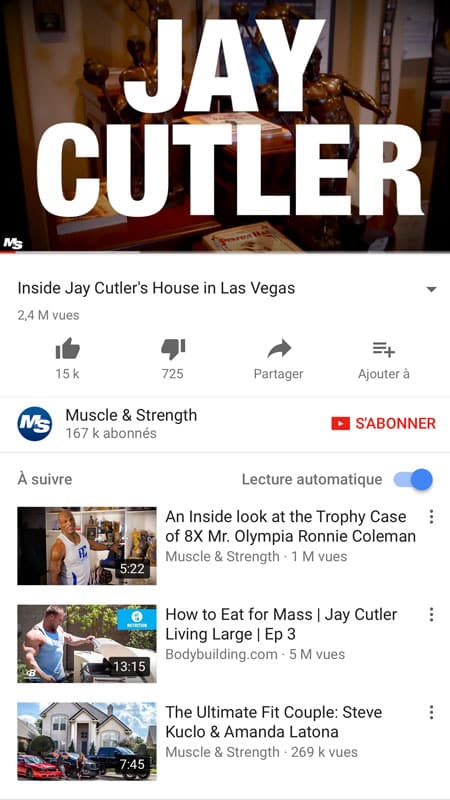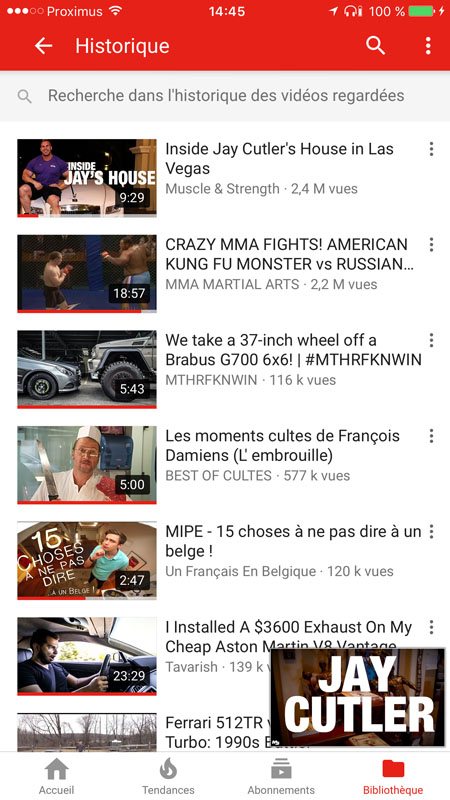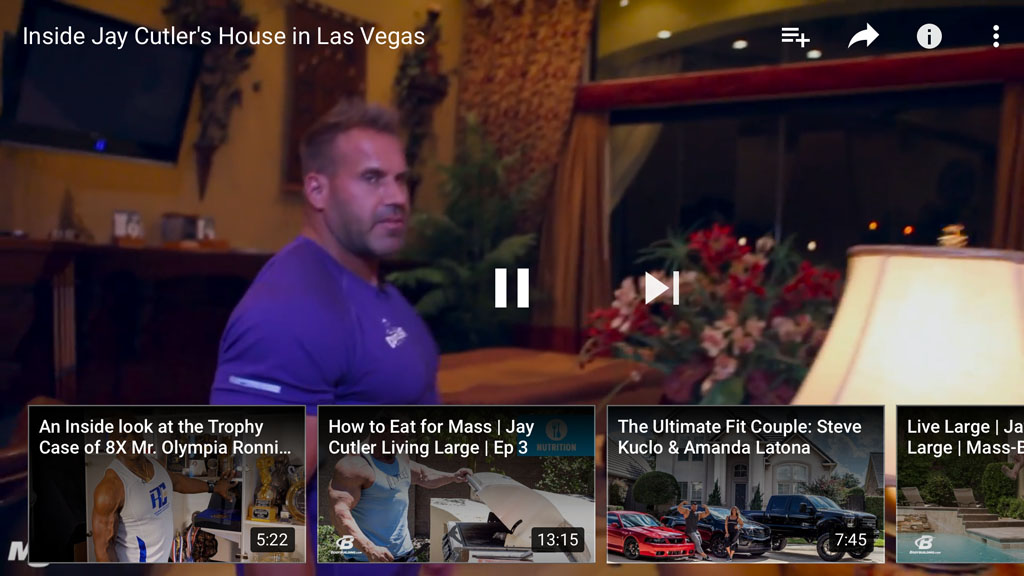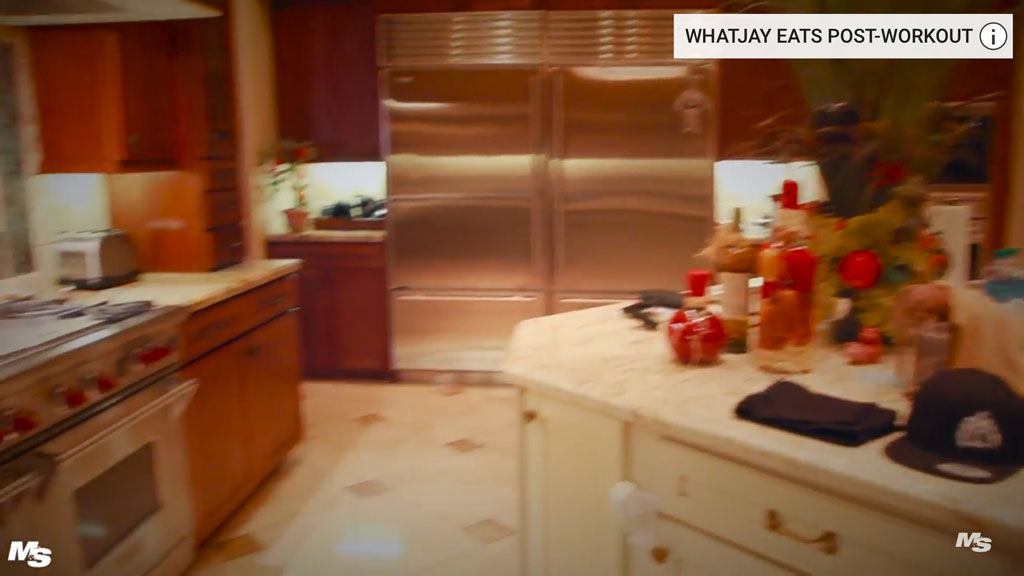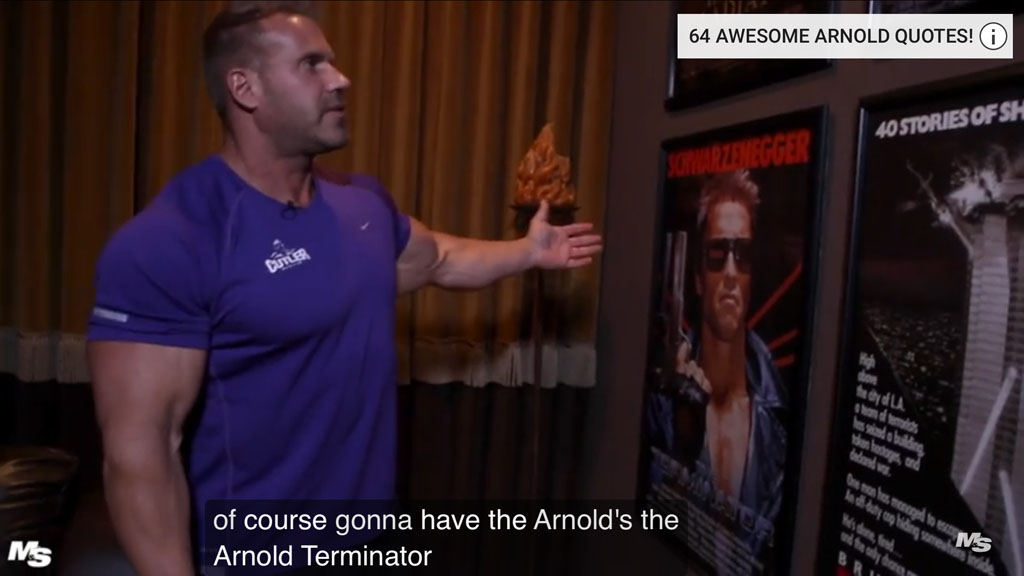If you are addicated to YouTube, chances are high their recommendation systems play an important role in your addiction.
Our deep interest in recommendation engines and algorithms makes us naturally gravitate towards the YouTube app to assess their latest developments. And the least we can say is that the latest version of their recommendation algorithm is extremely good and likely to trigger addiction among users.
How YouTube recommendations work
YouTube has considerably improved its app and provides several types of recommendations : in-video and off-video.
Let’s first explore the off-video recommendations which are also the oldest ones.
Off-video recommendations on YouTube
Let’s take some random video for our test. This one is about a visit of Jay Cutler’s house in Las Vegas (for those who don’t know, Jay Cutler is a famous bodybuilder who won 4 time the Mr. Olympia title).
Playing the video on your smartphone in portrait mode will let you see three other recommendations at the bottom of the page. This is obviously a quite limited choice and Youtube looked into how to provide users with more choice, hence better chances to satisfy them with alternative videos.
The solution to this problem came with version 5 of the Youtube mobile app, enabling users to keep watching a video in the bottom right corner of the screen while still being able to browse recommendations.
Youtube In-Video recommendations
The first breakthrough in terms of user’s experience came with the most recent updates of the mobile app.
First of all YouTube managed to present a list of recommendations that can be permanently accessed during the play without stopping the video.
Vignettes appear at the very bottom on the screen and that be made visible by sliding them up (see screenshot below).
That way the user can chose another video to switch to at any moment.
Second, YouTube started including in the top right-hand corner of the screen contextualized recommendations the quality of which is just mindblowing.
In the examples below you can see two amazing use cases. The first one regards Jay Cutler talking about his kitchen where he uses to spend a lot of time because bodybuilders need to eat a lot. Immediately a suggestion appears in the top right-hand corner proposing a video on Jay Cutler’s post-workout nutrition routine.
The other example is even more striking. Jay Cutler presents his private movie theater where posters of his favorite movies are on display. When he talks about Terminator with Arnold Schwarzenneger, a recommendation for “64 awesome Arnold quotes” appears.
How such a precision is possible can probably be explained by the automatic subtitling recently introduced by YouTube.
What happens is that the recommendation algorithms probably use contextual information provided by sub-titles to propose new choices of videos. Whereas recommendations may remain within the same semantic field (see for instance the first recommendation on Cutler’s nutrition routine), you see that the Schwarzeneger’s recommendation has the potential to draf the viewer away from the main topic of the video he is watching. This can be related to a solution to the filter bubble problem.
Posted in big data, Innovation, Marketing.
